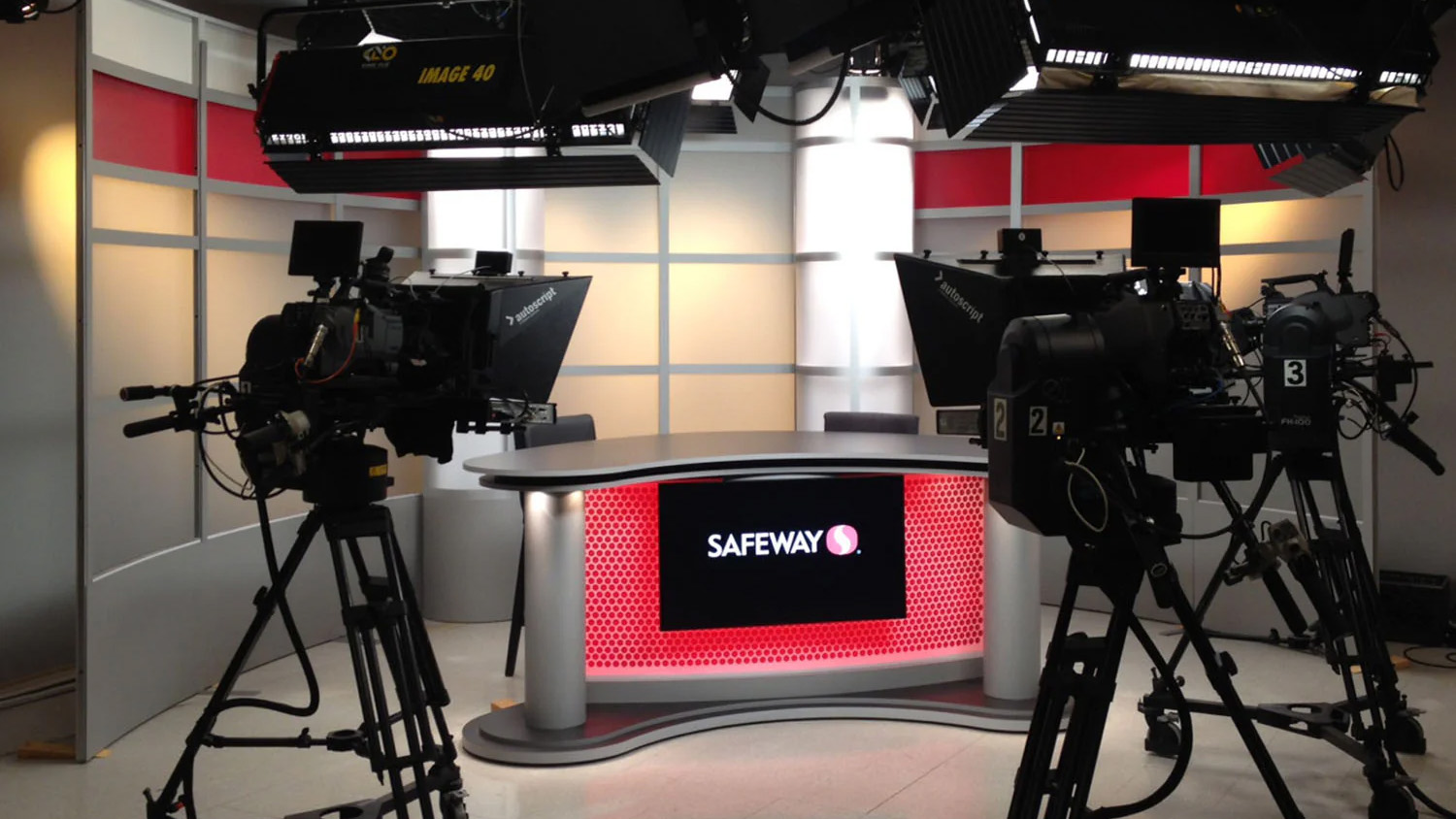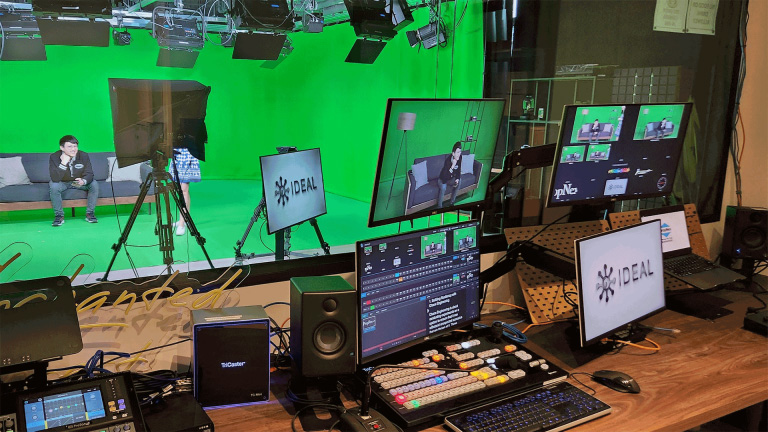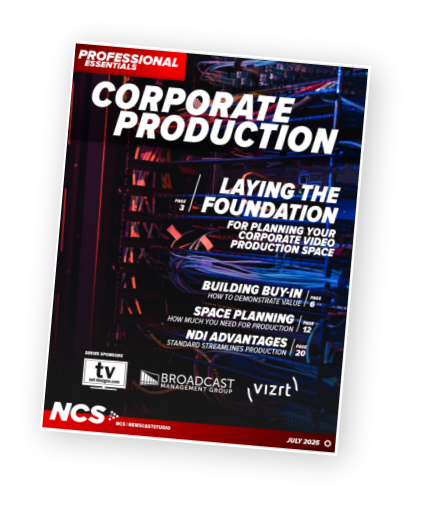Delivering value to stakeholders with corporate production studios

Weekly insights on the technology, production and business decisions shaping media and broadcast. Free to access. Independent coverage. Unsubscribe anytime.
The rise of in-house video production has shifted corporate studios from occasional-use facilities to central infrastructure supporting daily business communication.
Whether it’s a live CEO appearance on CNBC, an internal town hall or a steady flow of YouTube content, today’s studio must deliver consistent value across a wide range of formats.
Designing for that versatility, without overbuilding or creating operational friction, is the central challenge.
As organizations take greater control of their communications, the studio becomes a visible, high-value investment in how a company informs, aligns and represents itself. Done right, it’s not just a space to produce video — it’s infrastructure that supports credibility, efficiency and growth.
“A corporate studio empowers organizations to communicate more effectively with employees, investors, clients and the media. It enables consistent, timely and polished messaging, whether you’re making internal announcements, hosting live events or broadcasting strategic updates,” said Todd Mason, CEO of Broadcast Management Group.
Yet despite the appeal of professional-grade visuals and in-house control, many studio projects fall short of expectations. Not because of technical gaps, but because they were designed without a clear link to stakeholder value.
This article explores how the foundation of a content studio, its physical and technical infrastructure, can be designed to serve the organization’s broader goals.
Value beyond video
“The spaces for corporate studios need to be more than just studios; they must be transformative environments for communication. Think of a traditional boardroom: it’s designed for people to sit around and talk to one another. A corporate studio should not just preserve that sense of connection, but elevate it,” said Chris Black, CMO of Vizrt.
A well-built studio delivers value in multiple ways:
- For communications leaders, it provides a fast, reliable way to deliver executive updates, company-wide messages and crisis communications without relying on outside vendors or rented space.
- For business units, it becomes a platform for training, marketing or product content that is always available and brand consistent.
- For IT and facilities, it can be integrated into existing systems, supported with standard processes and scaled securely.
- For executive leadership, it signals a commitment to transparency, modern communication and operational excellence.
This value doesn’t come from technology alone. It’s the result of planning infrastructure that supports clear, repeatable communication at the speed of business.
Planning with purpose
The foundation of a successful studio starts with alignment: what is the business trying to achieve and how can the studio help deliver that?
A clear business case may include goals like:
- Reducing time-to-publish for internal or external messages
- Increasing consistency and quality of investor communications
- Expanding reach of leadership visibility without extensive travel
- Enabling decentralized teams to contribute content
- Supporting the brand with professional-grade presentation
When these goals are identified early, the infrastructure plan can follow. A space intended to support weekly executive town halls and occasional live media hits will have different requirements than one focused on high-volume training content or podcast production. But in each case, the infrastructure exists to support outcomes, not just production.
Designing for credibility and trust
For many stakeholders, especially at the executive level, credibility is non-negotiable. Poor audio, inconsistent visuals or unreliable systems can undermine even the best content.
Infrastructure decisions like power, acoustics, network routing and signal integrity, may be invisible to viewers, but they are fundamental to trust. If a CEO appears live on CNBC, the production must be seamless. If a product leader addresses 15,000 employees worldwide, the stream cannot fail.
Reliable infrastructure is what enables high-stakes communication to happen with confidence, on demand.


Efficiency and scale
In-house production is often sold on cost savings, but the real value is speed.
“With scalable and easy-to-use tools, the space itself can foster collaboration,” said Black. “We’re focusing on corporate studio spaces and tools that are highly flexible and intuitive, which means they’re built to be accessible to marketing teams and executives who use video to tell stories, engage audiences, and connect with stakeholders.”
The ability to walk into a dedicated space and record, stream or publish within minutes changes how content fits into business workflows.
This only works when infrastructure is built to support repeatability: preset lighting and camera positions, automated signal routing, integration with editing systems or collaboration platforms.
It’s not about building a facility that can do everything. It’s about building one that does what matters: quickly, consistently and without unnecessary overhead.
Investing in long-term adaptability
Corporate priorities change. So do platforms, formats and teams. The studio infrastructure should allow for that.
A flexible foundation ensures that today’s use case isn’t tomorrow’s limitation. This doesn’t mean overbuilding. It means designing for informed evolution.
The studio should be a durable asset, not a one-off project. And that requires thinking beyond the first video shoot to the workflows, policies and expectations that will shape the studio’s role over time.
The real value of a corporate studio isn’t in the equipment list — it’s in how well the infrastructure supports the organization’s need to communicate clearly, credibly and efficiently. When that’s the goal, the blueprint becomes more than a floor plan. It becomes a roadmap for strategic alignment.
Laying the foundation for your corporate broadcast studio
Part One of the Professional Essentials: Guide to Corporate Production explores how to lay the right foundation for in-house content production. From space planning and infrastructure to workflow standards and team alignment, this guide outlines the key decisions that shape long-term value.
Download Now






tags
Broadcast Management Group, Chris Black, Todd Mason, Vizrt
categories
Corporate and Enterprise Video Production, Featured, Professional Essentials